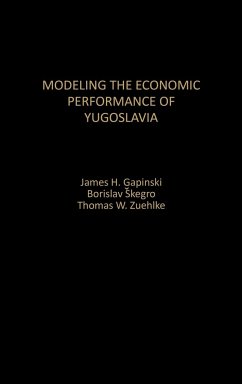
The Economic Structure and Failure of Yugoslavia
Versandkostenfrei!
Versandfertig in 1-2 Wochen
87,99 €
inkl. MwSt.

PAYBACK Punkte
44 °P sammeln!
For roughly three decades following World War II, Yugoslavia enjoyed economic success unparalleled in the communist world. Then came the 1980s. Economic success turned into economic failure, and before long Yugoslavia ceased to exist. This study addresses the question: Could the failure have been prevented? The work begins with a sketch of the historic and economic facts in the life of the country, turning then to theory and the relationship between economic theory and practice in Yugoslavia. It analyzes structure--that which prevailed at the time remedial action could have been taken--and sim...
For roughly three decades following World War II, Yugoslavia enjoyed economic success unparalleled in the communist world. Then came the 1980s. Economic success turned into economic failure, and before long Yugoslavia ceased to exist. This study addresses the question: Could the failure have been prevented? The work begins with a sketch of the historic and economic facts in the life of the country, turning then to theory and the relationship between economic theory and practice in Yugoslavia. It analyzes structure--that which prevailed at the time remedial action could have been taken--and simulates remedial scenarios. Finally, Gapinski draws conclusions from a comprehensive program of restructuring, from the regional composition of the country, and from the profound changes that have swept across Eastern Europe.












